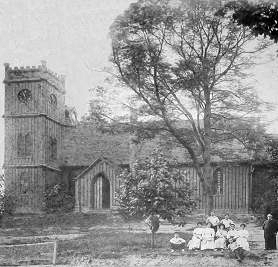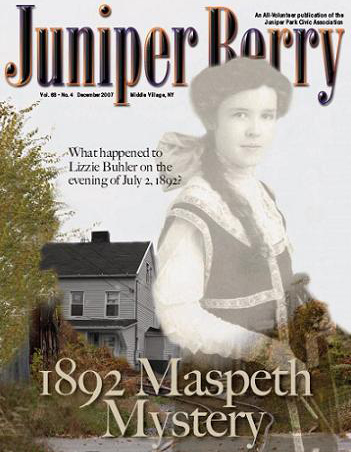1642 – English settled on Maspeth Island at Newtown Creek. They met with resistance by Native Americans and by 1643 much of the colony had fled back to Manhattan or resettled in Newtown. When Maspeth was resettled, the colonists moved further inland and used Newtown Landing as the town dock. This would later become the center of town. St. Saviour’s is believed to be the final resting place of several Native Americans.
1776 – British General Warren used the Sackett home as headquarters while his troops were quartered at the Queenshead Tavern across the street. The Tavern and Sackett House were located feet from the town dock and down the street from St. Saviour’s. A Revolutionary War cannon was dug up nearby in the 1960s. The St. Saviour’s property was scoured for metal artifacts in the mid-1990s and several were found that may date to this time period.
1846 – The Maspeth Church was formed by David S. Jones, son-in-law of Dewitt Clinton, Garrit Furman, author of the “Maspeth Poems”, Congressman James Maurice and farmer John Van Cott. Three of the men lived within close proximity to each other along Old Flushing Avenue, while Furman lived on Furman Island a short distance away. The congregation initially met at the Maspeth Hotel, located near the town dock. They decided to build a church edifice that year. Maurice donated land at Maspeth Hill upon which to build the structure.
1847 – St. Saviour’s is designed by Richard Upjohn. It is constructed by townspeople.
1848 – St. Saviour’s is consecrated.
1849 – Parsonage is constructed on property owned by James Maurice.
1850 – Mount Olivet Cemetery is founded by James Maurice and others as an Episcopal Cemetery. By 1851, it was opened to all faiths.
1878 – James Maurice donates the land upon which the parsonage sits to the Episcopal Church instructing that it should forever be used for church purposes. He later also donated the Maurice Woods, located on what is now the Ridgewood Plateau, on which to build a seminary.
1884 – James Maurice dies. His surviving sisters subdivide and sell his property and move into a home on Hill Street (57th Road) and Old Flushing Avenue (Rust Street). The home still stands today.
1907 – Last surviving Maurice sister passes away.
1948 – St. Saviour’s celebrates its 100th anniversary.
1970 – St. Saviour’s congregation is devastated just before Christmas after three juveniles accidentally set the church on fire.
1972 – Church reopens after having been repaired.
1995 – Dwindling attendance forces St. Saviour’s to close.
1997 – San Sung Korean Methodist Church purchases property for $450,000.
2005 – Korean congregation sells church to foreign developers for $6 million. Developers apply for zoning change so they may build houses on the site. The day after Christmas, construction fill from other locations is dumped on the site. This continues for many months.
2006 – Juniper Park Civic Association fights to keep the church standing in many ways, including filing a lawsuit based on James Maurice’s deed restriction. The case was eventually dismissed, but it put a halt to the demolition for quite some time.
2007 – The 185 trees present on the St. Saviour’s property were cut down after JPCA held a rally asking the city to purchase the property for use as a park. The zoning application was headed toward certification when it was suddenly withdrawn by the applicant. Charles Ahlers, formerly of Maspeth, comes forward to say that at one time he lived on the property and has personal knowledge of the locations of the graves of both the early parishioners of the church and Native Americans.
2008 – What will the future hold for St. Saviour’s during its 160th anniversary year?




